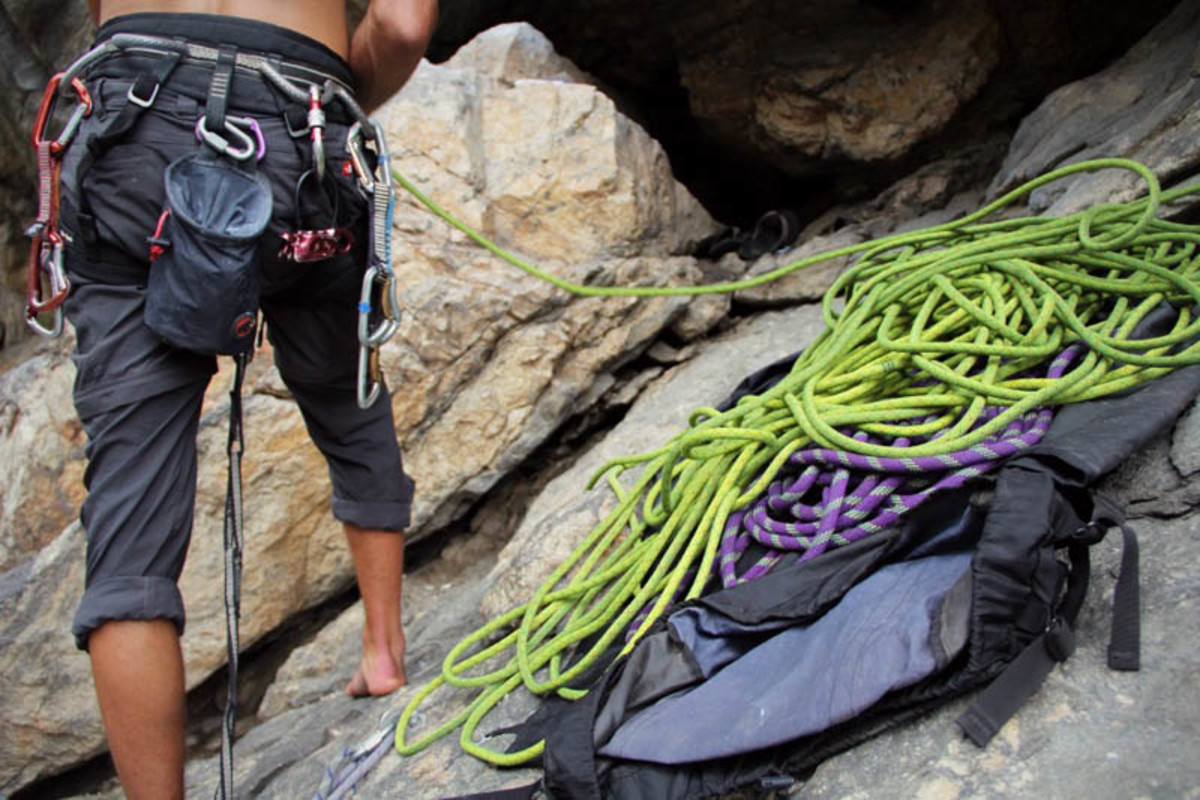Every subculture comes with its own vocabulary, and for rock climbers, “crag” is as much a part of the rock climbing dictionary as “beef jerky.”
As if all the technical aspects of climbing weren’t intimidating enough, to get started, you might feel like you also need to know the difference between a trad and sport route, a carabiner and a cam, and that Gaston isn’t just the hunky bad guy from “Beauty and the Beast.”

Pull out the flashcards—here are a few of the basics to know before you get your climb on:
Anchor
A point on top of a climb with fixed bolts or removable protection (like a sling around a sturdy tree).
Belay
Securing the rope while your partner climbs. You’ll have a belay device that provides friction to the rope system—if your partner falls, the device will lock itself or help you support their weight.
Beta
A specific step-by-step description of a climb or a sequence. This is information provided from a guide book or a fellow climber (e.g. “Hey man, what’s the beta on that 5.12 over there?”).
Cam
A mechanical, spring-loaded piece of climbing protection that fits into the cracks and holes in a rock wall and secures a section of rope to that area of the wall in the event of a fall.
Carabiner
A snap-link piece of metal that connects your rope to your protection (also called a “biner”).
Crimp
A small ledge where you literally crimp your fingers, bending them to put pressure on your knuckles with a tight grip (e.g. “Ugh, that climb was way too crimpy; my fingers are killing me!”).
Crux
The hardest part of a climb. The crux can appear anywhere along the climb, sometimes it’s the first move.
Flash
To send, or complete, a pitch on your first try with the help of some beta.
Gaston
A climbing technique where the fingers face inward, like you’re trying to pry open elevator doors from the middle.
Heel hook
Placing your heel on or around a rock feature and pulling, most common on overhanging rock.
Jug
A climber’s favorite feature: a large hold that’s easy to grasp.
Pitch
A unit of measure for the length of a climb as one full length of your rope. This measurement is interpretive, and can range from 30 feet to 1,000 feet (and even longer). A multi-pitch climb is one where you’ll stop midway up a rock route and pull up rope before starting another pitch.
An small inset hole or rock hollow that you can probably only manage to get a finger or two in.
Protection
Devices and tools used to reduce the risk of climbing and protect others while you climb. This includes items like nylon webbing, cams, bolts and other tools of the trade.
Quickdraw
A piece of nylon webbing with loops at each end for carabiners. You’ll use this to clip into protection.
Smear
To drag your entire foot along the wall to offer a boost between proper holds or crimps.
Sport climbing
Climbing that entails fixed protection, typically drilled-in bolts.
Trad climbing
Traditional climbing might be the most encompassing form of climbing since you can do it almost anywhere. There is not permanent man-made protection, so as you climb, you’ll use climbing gear to create your own. This is also an environmentally friendly type of climbing, as it doesn’t harm the natural features of a rock wall.
from Men's Journal https://ift.tt/3eXjEZe


0 comments